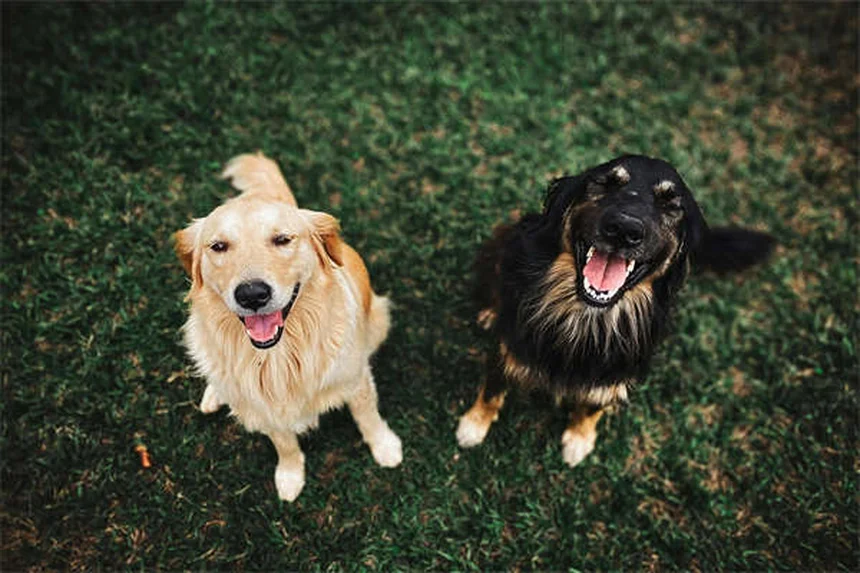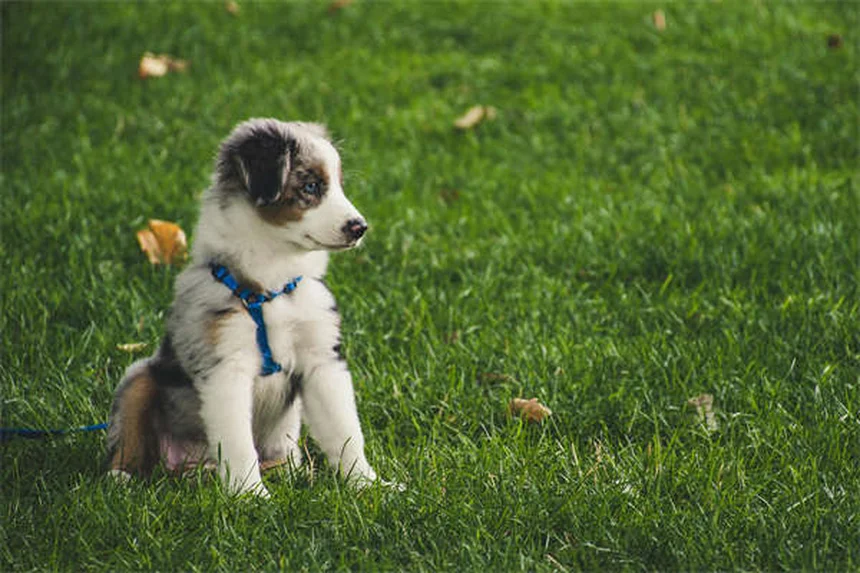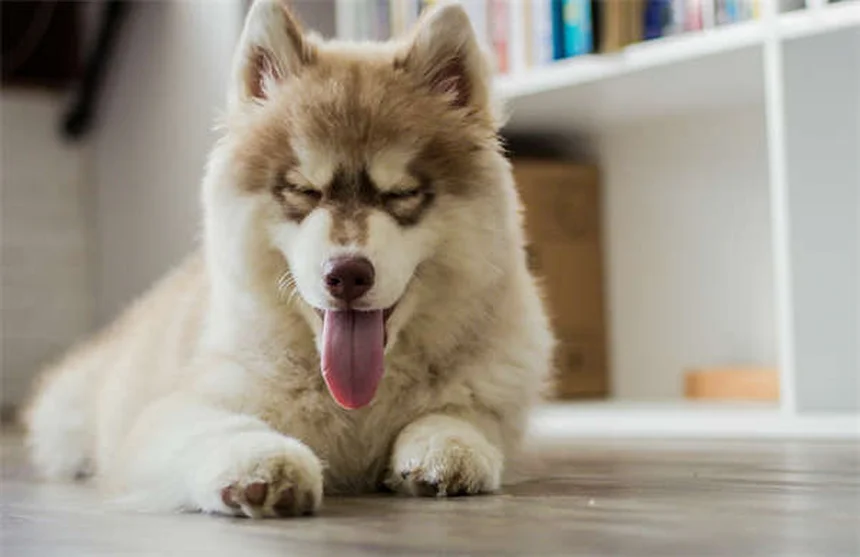Wondering how to introduce a cat to a dog without the fur flying? Here's the deal: with patience and the right approach, most cats and dogs can learn to live together peacefully. The key is taking it slow - we're talking weeks, not days. I've helped countless pet parents through this process, and I can tell you that rushing it is the #1 mistake people make.The truth is, your pets need time to adjust to each other's smells, sounds, and presence before they're ready to meet face-to-face. Think of it like online dating - you wouldn't propose marriage on the first Zoom call, right? We'll start with scent swapping, move to visual introductions through a barrier, and finally progress to supervised meetings. Along the way, I'll show you how to read your pets' body language so you know when they're comfortable or need a break.Remember, every pet pairing is different. Some might become best buddies in two weeks, while others may take months to reach a peaceful coexistence. And that's okay! The goal isn't necessarily friendship - it's mutual respect and safety. Stick with me, follow these steps, and you'll give your furry family the best chance at harmony.
E.g. :Rabbit Kidney Stones: 5 Warning Signs Every Owner Should Know
Advertisement
- 1、How to Introduce Your Cat to Your Dog Without the Drama
- 2、The Gradual Introduction Plan
- 3、When Things Get Real
- 4、Troubleshooting Common Issues
- 5、Final Thoughts
- 6、Beyond the Basics: Creating a Harmonious Multi-Pet Household
- 7、Creating Shared Positive Experiences
- 8、Environmental Enrichment Ideas
- 9、When Personalities Clash
- 10、Long-Term Relationship Maintenance
- 11、Special Considerations
- 12、FAQs
How to Introduce Your Cat to Your Dog Without the Drama
Let's Get This Party Started Right
Hey there pet parents! So you're bringing home a new furry friend and need to make introductions? No sweat! I've helped dozens of pets become best buddies, and I'm going to walk you through every step. Just remember - we're not rushing this. Good relationships take time, whether we're talking humans or pets!
Did you know that according to the American Pet Products Association, about 67% of U.S. households own at least one pet? That's a whole lot of potential friendships we're creating! But here's the thing - cats and dogs speak completely different languages. Your job? Become their translator and relationship coach.
Setting Up for Success
First things first - we need to create a safe space for your cat. Think of it like their personal studio apartment where they can chill without the dog bothering them. A spare bedroom or bathroom works great. Pro tip: choose a room your dog doesn't visit often to keep their routine as normal as possible.
Now, I know you're excited to introduce them, but hold your horses! We need to quarantine the new pet for at least 3-4 days and get a clean bill of health from the vet. Trust me, you don't want to deal with fleas or worms spreading to your other pet!
The Gradual Introduction Plan
 Photos provided by pixabay
Photos provided by pixabay
Phase 1: The Scent Exchange Program
Here's where the magic begins! We're going to let them get familiar with each other's smells before they even meet face-to-face. It's like swiping right on a dating app before the first date.
Try this rotation schedule:
| Time | Cat Status | Dog Status |
|---|---|---|
| Morning | Free roam | Backyard |
| Afternoon | Bedroom | Free roam |
Want to speed things up? Swap their bedding or toys so they can really get familiar with each other's scent. It's like exchanging hoodies with your crush in high school!
Phase 2: The Peek-a-Boo Stage
Now that they're comfortable with each other's smells, it's time for some visual contact. But we're not throwing them into the deep end! Use a baby gate or screen door so they can see each other safely.
Here's a pro tip: make these sessions positive experiences by feeding them near the barrier. Start far apart and gradually move closer as they get comfortable. It's like training for a marathon - you wouldn't run 26 miles on your first day!
But wait - how do you know if they're actually comfortable? Great question! Your dog should have loose, wiggly body language and respond when you call them. Your cat? Look for forward ears and normal-sized pupils. If you see stiff bodies or pinned-back ears, take a step back.
When Things Get Real
The First Official Meetup
Okay, this is the big moment! Keep your dog on a loose leash (no tension!) and let your cat approach if they want to. Remember - cats are like that cool kid in school who needs to make the first move.
Watch for these warning signs:
- Dog stiffening or staring intensely
- Cat's tail puffing up or ears flattening
- Any hissing, growling or lunging
If you see any of these, calmly separate them and try again later. Rome wasn't built in a day, and neither are pet friendships!
 Photos provided by pixabay
Photos provided by pixabay
Phase 1: The Scent Exchange Program
After several successful meetings, you can try letting them hang out with the dog dragging a leash (for quick control if needed). Give your cat plenty of escape routes - cat trees and shelves are perfect. Think of it like giving a shy person at a party an easy exit if they feel overwhelmed.
Here's something important to remember: not every dog and cat will become best friends, and that's okay! Some will just learn to tolerate each other, and that's still a win. The goal is peaceful coexistence, not necessarily cuddle buddies.
Troubleshooting Common Issues
When Your Dog Won't Chill
Some dogs get way too excited about cats. If yours is bouncing off the walls, try these tricks:
1. Exercise them thoroughly before introductions
2. Use high-value treats to reward calm behavior
3. Consider a calming pheromone spray
Still struggling? A professional trainer can work wonders. There's no shame in calling in reinforcements!
When Your Cat Plays Hard to Get
Cats can be stubborn little creatures. If yours refuses to come out of hiding, try these tactics:
- Use irresistible treats like tuna or chicken
- Play with interactive toys to build confidence
- Create vertical spaces so they can observe safely
Remember the golden rule: never force interactions. Let your cat set the pace. Would you want someone dragging you to meet a stranger?
Final Thoughts
 Photos provided by pixabay
Photos provided by pixabay
Phase 1: The Scent Exchange Program
Every positive interaction is worth celebrating! Did they eat near each other without fussing? Victory! Did the cat walk past the dog without hissing? Major progress!
Keep a journal to track their progress. You'll be amazed at how far they've come when you look back in a few weeks.
When to Call It Quits
While most pets can learn to coexist, some pairings just aren't meant to be. If you're seeing constant stress or aggression after months of trying, it might be kinder to keep them permanently separated. Your vet or a behaviorist can help you make this tough call.
At the end of the day, what matters most is that both your pets feel safe and loved in your home. Whether they become best friends or just respectful roommates, you're giving them both a wonderful life!
Beyond the Basics: Creating a Harmonious Multi-Pet Household
The Power of Positive Reinforcement
You know what's better than stopping bad behavior? Rewarding the good stuff! When your dog ignores the cat or your cat confidently walks past the dog, make it rain treats! Positive reinforcement works wonders because it helps them associate good things with each other's presence.
Here's a fun experiment to try: whenever they're calmly in the same room, toss treats to both simultaneously. It's like throwing confetti at a party - everyone gets happy! Over time, they'll start thinking "Hey, when that other creature is around, good things happen!"
Understanding Their Body Language
Let's play detective for a minute. Your pets are constantly communicating - we just need to learn their language. A wagging tail doesn't always mean happiness in dogs, and a swishing cat tail isn't necessarily playful.
Check out these subtle signs of comfort:
- Dog's mouth slightly open with relaxed tongue
- Cat blinking slowly while looking at the dog
- Both animals able to nap in the same room
When you notice these golden moments, resist the urge to make a big deal out of it. Quiet praise works best - we don't want to accidentally hype them up!
Parallel Play Sessions
Think of this like two kids playing separately but happily in the same sandbox. Engage your dog with a chew toy while your cat plays with a wand toy nearby. The distance between them should be comfortable enough that neither feels threatened.
Gradually decrease the distance over several sessions. It's like moving two magnets closer together - go slow to prevent that sudden snap of repulsion!
Mealtime Strategies
Food brings everyone together, right? Start by feeding them on opposite sides of a closed door. As they get comfortable, try these progression steps:
| Stage | Cat Location | Dog Location | Barrier |
|---|---|---|---|
| 1 | Bedroom | Hallway | Closed door |
| 2 | Living room | Kitchen | Baby gate |
| 3 | Opposite sides | Same room | Leash on dog |
Remember, we're building positive associations here. If either pet stops eating or shows stress signs, take a step back in the progression.
Environmental Enrichment Ideas
Creating Cat Superhighways
Cats feel safest when they can survey their kingdom from above. Install shelves, cat trees, or window perches to give your feline vertical escape routes. It's like building a secret passageway system in your home!
Here's a cool fact: cats prefer to have at least three escape routes in any room. That way, they never feel trapped. Think about it - wouldn't you want multiple exits if you were at a party with someone ten times your size?
Doggy Zen Zones
Just like us after a long day, dogs need their chill spaces too. Create a cozy corner with their bed and favorite toys where they can retreat. Teach them a solid "place" or "mat" command so they have a job when the cat's around.
Ever notice how some dogs get obsessive about the cat? That's often because they're bored. A tired dog is a good dog, so make sure yours gets plenty of physical and mental exercise. Puzzle toys, sniff walks, and training sessions work wonders!
When Personalities Clash
The Overly Excited Dog
Some dogs just can't contain their enthusiasm around cats. If yours acts like they've spotted the most interesting creature on earth, try these techniques:
- Practice "look at that" games to teach calm observation
- Use a house line (short leash) for quick redirection
- Build duration in their "stay" command away from the cat
Here's a game changer: teach your dog that ignoring the cat earns the best rewards. It's like reverse psychology - suddenly being boring becomes the most rewarding option!
The Timid or Defensive Cat
Shy cats need extra patience. Create safe observation spots where they can watch the dog from a distance. Try using a Feliway diffuser to reduce anxiety - it's like aromatherapy for felines!
Did you know cats often feel more confident when they can approach from the side rather than head-on? Set up introductions accordingly. It's the difference between walking straight up to someone versus casually joining their conversation at a party.
Long-Term Relationship Maintenance
Preventing Resource Guarding
Even after successful introductions, keep an eye on potential conflicts over:
- Food bowls
- Favorite sleeping spots
- Human attention
Always feed them separately, at least initially. And when giving one pet attention, make sure the other doesn't feel left out. It's like balancing time between two kids - nobody likes feeling second best!
Ongoing Training Opportunities
The learning never stops! Continue reinforcing good behavior with both pets. Teach your dog new tricks to impress the cat (okay, maybe just to keep them engaged). Keep your cat's hunting instincts satisfied with regular play sessions.
Here's something to try: when your cat approaches the dog calmly, mark that moment with a quiet "yes" and toss a treat. You're essentially teaching them diplomacy skills - peaceful interactions pay off!
Special Considerations
Introducing Kittens to Dogs
Babies change everything! Puppies and kittens can often adapt more easily, but you still need precautions. Always supervise interactions - puppies don't know their own strength, and kittens are fragile.
Create kitten-only safe zones that the dog can't access. As the kitten grows more confident, they'll learn to hold their own. It's like watching a little sibling grow up and finally stand up to the big kids!
Senior Pets and Newcomers
Older pets deserve extra consideration. They might not have the patience for a rambunctious newcomer. Give your senior pet priority access to favorite spots and plenty of alone time.
Remember, we're aiming for peaceful coexistence, not forced friendships. Some grumpy old pets prefer to be only children, and that's perfectly okay too!
E.g. :Introducing a Cat to a dog… any tips? : r/dogs
FAQs
Q: How long does it typically take to introduce a cat to a dog?
A: The timeline varies widely depending on your pets' personalities. Some confident animals might adjust in as little as two weeks, while more cautious pets could take several months. In my experience, the average successful introduction takes about 4-6 weeks when following all the steps properly. The most important thing is to let your pets set the pace - if you rush the process, you'll likely have setbacks. Watch for positive signs like relaxed body language, curiosity about each other, and the ability to focus on other things (like treats or toys) when near each other. These indicate they're ready for the next step.
Q: What should I do if my dog keeps chasing my cat?
A: This is super common, especially with high-energy dogs. First, make sure your dog is getting plenty of exercise before introduction sessions - a tired dog is a calmer dog. Keep your dog on a leash during early meetings, and use high-value treats to reward calm behavior. If the chasing persists, go back to earlier steps (like scent swapping or visual barriers) for longer. Sometimes, consulting a professional trainer can help address the underlying prey drive or excitement issues. Remember, never punish your dog for chasing - this can create negative associations with the cat.
Q: My cat hides whenever the dog is around. Is this normal?
A: Absolutely! Many cats need time to build confidence around dogs. Make sure your cat has plenty of safe spaces like cat trees, shelves, or rooms the dog can't access. Try using interactive toys or extra-tasty treats to encourage your cat to come out when the dog is present (but at a safe distance). Some cats just prefer to observe from afar before engaging - and that's perfectly okay. The important thing is that your cat isn't showing extreme stress signs like refusing to eat or using the litter box.
Q: Can I leave my cat and dog alone together after they seem to get along?
A: Even after successful introductions, I recommend keeping them separated when you're not home, at least for the first few months. It's better to be safe than sorry! Use baby gates or separate rooms when you're out. Eventually, if they've shown consistent positive interactions for several months with no incidents, you might try short absences. But always provide your cat with escape routes and high perches, just in case. Some pet parents choose to keep their animals separated indefinitely when unsupervised - and that's a perfectly valid choice too.
Q: What are the signs that my pets aren't going to get along?
A: While most pets can learn to coexist, some combinations just don't work. Red flags include: your dog becoming obsessive about the cat (constantly staring, whining, or trying to get to them), your cat showing prolonged stress (hiding all the time, not eating, overgrooming), or any actual aggression (biting, scratching, lunging). If you're seeing these signs after months of gradual introduction attempts, it might be time to consider permanent separation arrangements. A certified animal behaviorist can help assess your specific situation and suggest alternatives.

